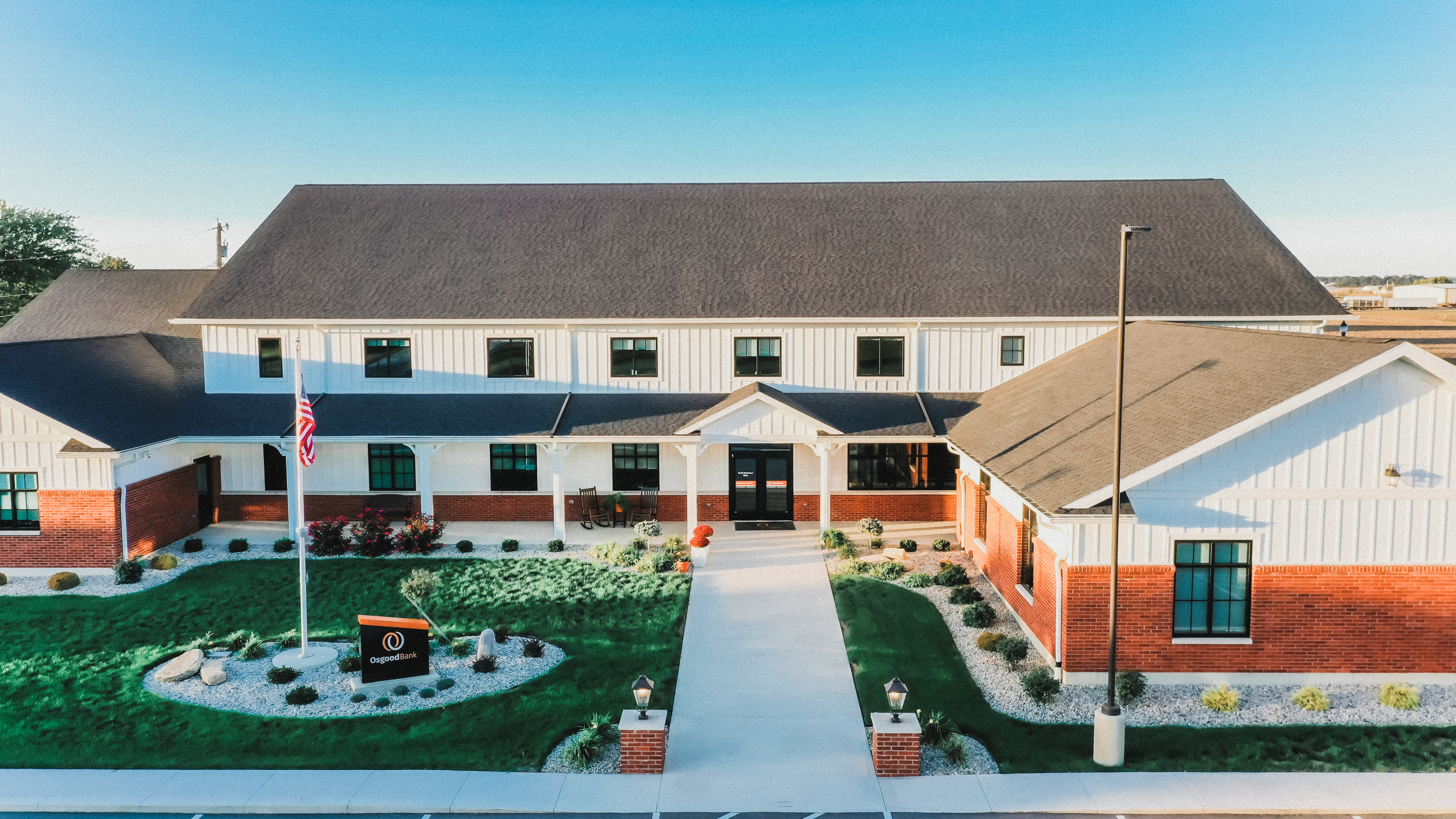
Tony Kaiser

Over the last several days, Osgood Bank has received questions regarding the recent failure of Silicon Valley Bank (SVB) in California and Signature Bank in New York. Signature focused on serving the crypto industry, which Osgood Bank does not. For this reason, this note will focus specifically on the variances between Osgood Bank and SVB to provide context and peace of mind.
Osgood Bank vs. SVB
Location
-
SVB: 15 branches in California, 5 branches in Massachusetts, and 6 international branches located in Asia and Europe.
-
Osgood Bank: 4 branches located in small towns in Western Ohio.
Customer Profiles & Deposits
-
SVB: Approximate total of deposits of $175 billion reported on 12/31/2022. SVB had four branches located in Santa Clara, California, the center of Silicon Valley. These four branches alone account for $152 billion in deposits. That's an average of $38 billion per branch.
-
Osgood Bank: The average Osgood Bank branch has $79 million in deposits. For perspective, Osgood Bank's average deposits per branch would need to increase by 481x to match an SVB branch in Santa Clara.
Insured Deposits
-
SVB: Initial reporting has stated that up to 95% of customer accounts at SVB had uninsured balances.
-
Osgood Bank: Approximately 97% of customer accounts are fully insured.

Osgood Bank is a stable community bank.
This stability starts with the profile of our customers. Osgood Bank's deposit base comes from local families and small businesses.
SVB's deposit base came from Venture Capital firms and Start-Up Technology companies.
Funds Management
SVB: Only 42% of SVB's deposits funded loans at 2022 year-end. This typically leads to lower margins and profitability. Additionally, over half of SVB's balance sheet was comprised of long-term investments (approximately $100 billion) that were challenging to sell when the bank required cash demanded by their depositors. This was the primary reason the bank failed.
Osgood Bank: Nearly 90% of Osgood Bank's deposits fund loans. This leads to stronger performance. It also helps support jobs, home ownership, and economic growth.
COVID-19
During the pandemic, deposits flooded into banks. The two primary factors for this money movement were stimulus dollars from the government and the instability of the stock market. People with money sought safety and placing funds in FDIC insured banks was a safe alternative to the stock market.
Now that the pandemic has passed, the government has increased interest rates at a rapid pace to curb inflation. Increased rates mean savers with excess funds are shopping for higher returns. As a result, money is being moved between banks as competition for deposits has become more intense. With that in mind, look what happened to the balance sheets of Osgood Bank vs. SVB during and after the pandemic:
SVB: Deposits grew from $62 billion at 12/31/2019 to $175 billion at 12/31/2022. An increase of almost 182%!
Osgood Bank: Deposit balances grew by 36% from 12/31/2019 to 12/31/2022. This is significant growth over three years, but it's manageable.
So why did SVB fail & how is Osgood Bank different?
SVB was a one-of-a-kind bank given its extreme high exposure to Venture Capital firms. Osgood Bank's customers are individuals, families, and small businesses. The risks and profiles of the two banks could not be more different.
Last week, depositors at SVB started to move their money out of the bank rapidly. In hindsight, this is not surprising. Many SVB commercial clients were large tech firms with hundreds of millions of dollars in SVB checking, savings, and money market accounts for their respective businesses. As interest rates have risen, professional money managers working for these firms became concerned about the earnings and liquidity of the bank.
SVB could not afford to pay market rates to their large depositors and maintain profitability given their exposure to long-term investments. For reference, their investment portfolio of $100 billion was returning 1.84% as of 12/31/2022. Ultimately, with many CD rates now in the 4% range, the risk profile of the bank, along with the size and instability of their depositors, eventually caught up to them.
Final Comments
Managing a bank's balance sheet is very similar to retirement investing for consumers; it pays to have a diversified portfolio. SVB had all of their eggs in one basket AND they were huge, like Ostrich eggs! Osgood Bank has a strong mix of small and mid-sized clients, much more like the chicken eggs produced by so many Western Ohio farmers. In the end, smaller is plentiful and safer.
Osgood Bank has very consistent earnings based on core principles and values. Additionally, unlike many community banks, Osgood Bank offers niche deposit products that allow us to expand FDIC coverage beyond the typical $250,000 limit. Consequently, you could have millions of dollars in deposits at Osgood Bank and be fully insured. This system is referred to as "insured-cash sweep" or ICS. ICS is a function of our money market account and works using a network of other FDIC insured banks. ICS allows us to literally provide an unlimited level of FDIC insurance coverage. If you're interested in these products, they require special handling and additional agreements, but please talk with us.
If you have any questions about your relationship with Osgood Bank or FDIC coverage at any bank, please reach out. As the saying goes, "this too shall pass". We hope you find this note helpful and we appreciate your support.











